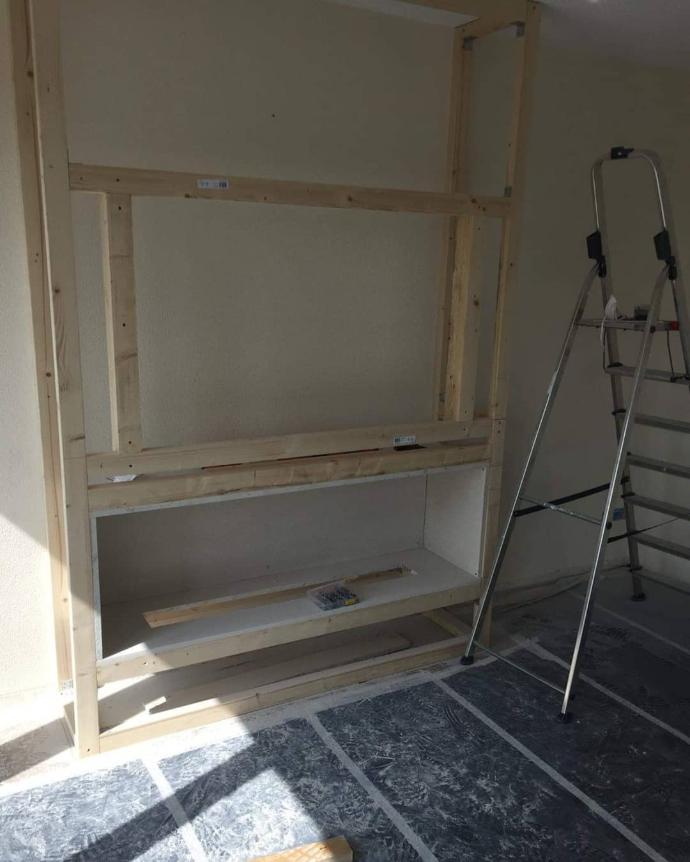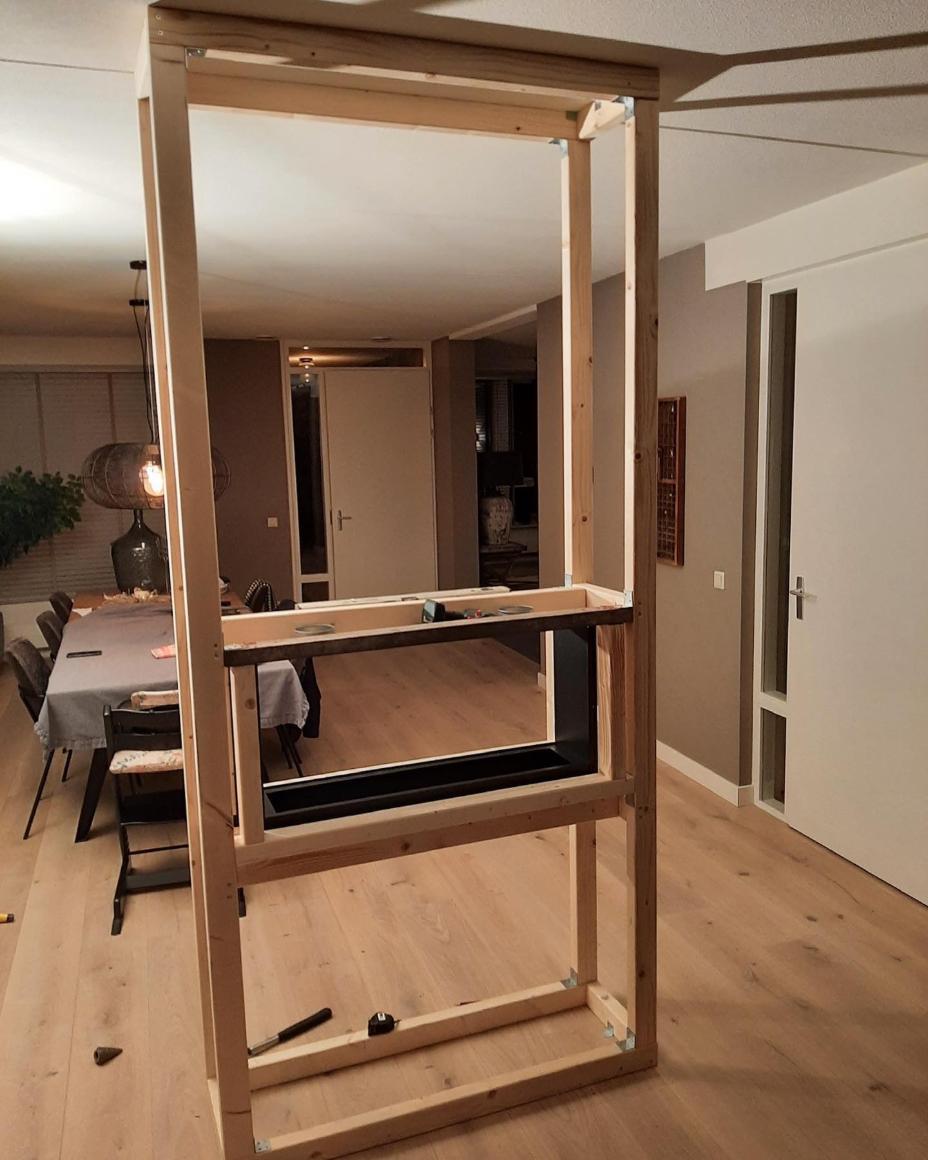-
Electric built-in fireplace
-
Bioethanol built-in fireplace
-
Mediawall fireplace
Buying a fireplace insert?
Explore all options
A built-in fireplace is a fireplace that is installed in an existing or new opening, such as a mantel, wall, or partition. This offers a lot of flexibility in placement and provides a sleek modern look. In addition to the practical benefits, a built-in fireplace is also a real eye-catcher. Moreover, there are many options for replacing an existing fireplace.
How do I install a built-in fireplace?
An electric built-in fireplace or bioethanol built-in fireplace is relatively easy to install yourself. These fireplaces produce no harmful emissions, so they don’t need to be connected to a flue. Properly installing a flue is often best left to a professional. Installing an ambient fireplace is mostly about good planning.
Create a clear design for your built-in fireplace
Make sure to research what your design should look like. For example, Instagram koffers plenty of creative ideas with electric built-in fireplaces.
A design made entirely of chipboard can be difficult. Even with a good design, cutting chipboard precisely without the right tools can be a challenge. Designs made of MDF or plywood are often easier to adjust and correct. If you're inexperienced with woodworking, cabinet doors can be particularly tricky. If you're less handy, focus your unique fireplace design on painting, wallpapering, or applying decorative slats, such as those seen in acoustic panels.
Choosing the right spot for your fireplace
A fireplace without a flue can, in principle, be placed anywhere. Use painter’s tape or cardboard to visualize the size if you’re unsure.
A good guideline for flame height is eye level when sitting on a chair or sofa. If you plan to mount a TV above the fireplace, consider the heat output. Check with your TV supplier if it’s suitable for this setup.
An electric fireplace needs a power socket, preferably a grounded one. If you don’t want to move sockets, plan a location near an outlet. For best flame effects, choose a slightly dimmer space—direct light often dulls the visual impact.
A bioethanol built-in fireplace is even easier to place than an electric one, since it doesn’t require a flue or power socket. However, beware of drafts: the flames will move with the air flow.
Best materials for installation of your built-in fireplace
For electric fireplaces, you can use all types of wood, stone, or plaster. Electric fireplaces don’t get hot; the heat usually comes from a vent on the unit itself.
For bioethanol fireplaces, use non-combustible materials. Fire-resistant boards like Promatect, Promafour, Fermacell, or Nobranda are available at specialty hardware stores. Ensure there’s enough space above the flames—if heat builds up, fuel burns faster, increasing consumption and flame height, which can cause damage.
Other design considerations of your built-in firplace
If your fireplace malfunctions and needs repair, it must be removable. Always design your build-in with serviceability in mind.
Take photos during construction. They’re useful for future reference and fun to share—you can be proud of your custom-built fireplace!
Don’t skimp on the fireplace unit
Roughly 50% of your total fireplace cost goes into materials. So you’ll want a unit with a long lifespan. Check warranty and spare parts availability. Some online deals seem attractive, but customer service may be lacking if problems arise later. If your model needs replacing and dimensions differ, redesign costs can be significant.
Professional installation by a furniture maker
Not confident in doing it yourself? A furniture maker, carpenter, or interior builder can help.
Integrating a fireplace into a piece of furniture is straightforward for professionals. Many have experience with custom fireplace builds. Prepare well and bring examples to your appointment—you'll be amazed by what's possible.

Can a built-in fireplace heat your home?
These fireplaces are primarily for ambiance—like a real fireplace without the downsides.
Electric and bioethanol fireplaces do produce heat, but mostly for supplementary heating. They can warm small spaces, and work well with floor heating or mild outdoor temperatures.
Advantages of an electric built-in fireplace
Electric fireplaces are relatively inexpensive to install and offer great design flexibility. The latest models are nearly indistinguishable from gas fireplaces. Flame height is independent of the heat function, so you can enjoy realistic flames without extra energy use. Depending on your situation, electric heating may also be cost-efficient.
Advantages of a bio-ethanol built-in fireplace
If you love real flames, a bio-ethanol unit is the most budget-friendly built-in option. With no flue required, it’s easy to install, even on a smaller budget.
With real flames and real heat, bioethanol fireplaces come closest to gas or wood stoves. Whether you care about the environment or your wallet, it’s a solid choice.
Need extra inspiration for your new built-in fireplace?
Visit our showroom and see our full range of built-in fireplaces in action. Get inspired and advised by our experts. They’ll help you choose the right model, power level, and recommended materials for installation.
|
|
|
|
|
|
|
|
|
|
|
|
Try our bioethanol fireplace for free* for 30 days.
We are eager to convince you of our Fire System!
